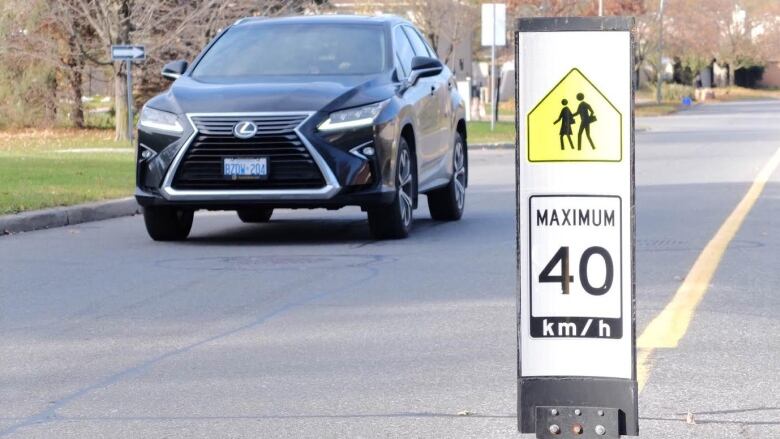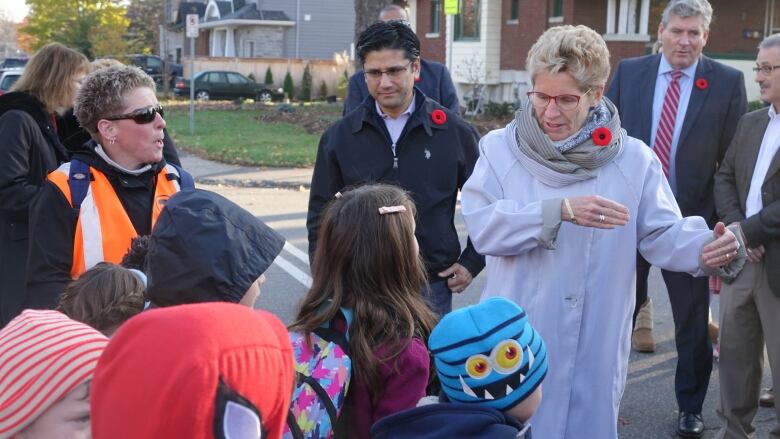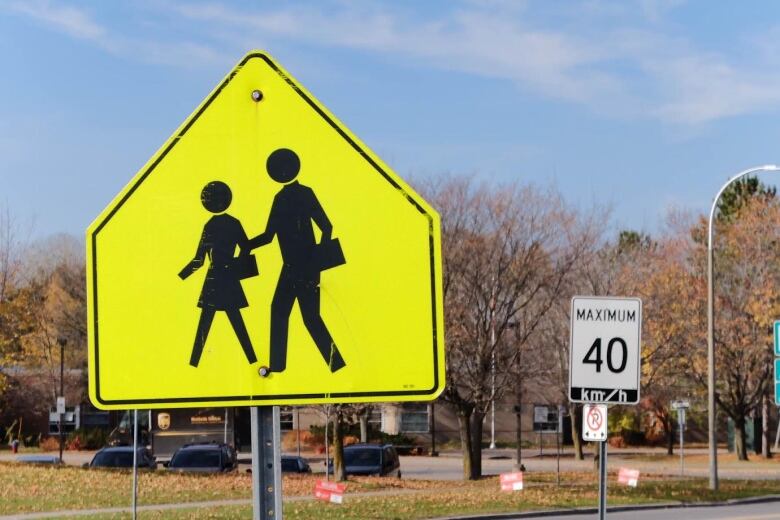Kathleen Wynne announces new photo radar legislation for Ontario
Municipalities would be able to create zones with reduced speed limits

Municipalities in Ontario could soon deploy photo radar in school zones ifnew legislation announced by Premier Kathleen Wynnein Ottawa today is adopted.
- Jim Watson now open to photo radar, but only in school zones
- Photo radar in Ottawa: Pros and cons debated on social media
The proposed law would allow municipalities to use automated speed technology to take photos of speeders' licence plates in school zones, and in areas around places likedaycares, parks, seniors' homes andhospitals.
"Kids will be safer because of these decisions," Wynne told a crowd atElmdalePublic School Tuesday morning.
Photo radar has been a controversial issue in Ottawa.Mayor Jim Watson initially opposed photo radar arguing it was a "cash grab" for the city, but later changed his stance if the technology was only used in school zonesand only if the ward councillor wants it.

"This gives us a tool to deal with a serious problem," he said Tuesday.
The announcement got a round of applause from Ottawa Police Chief CharlesBordeleau.
He said the technology will deter speeders and allow him to deploy his officers to more pressing crime scenes.
"This is about saving lives ... this is about changing driver behaviour," the chief said.
Wynnesaid any revenue generated from photo radar would stay with the municipalities.Previously, Watson told reporters any money generated by a photo radar pilot project would go into road safety programs and not into general city coffers.
New speed zones
If passed, the law would also allow municipalities to lower defaultspeed limits from 50 km/hto 40 or 30. The law would give municipalities the power and choice to lower limits in individual neighbourhoods, or wider areas.
Watson said he'd like to see the speed limit come down to 40 km/h on Ottawa's residential streets,but will undertake consultations to seewhat each ward wants.

The proposed legislation would also streamline the province's red-light camera program so cities and towns could bypass the lengthy regulatory approval process.
The city of Toronto had also asked the province to consider letting municipalities use technology including photo radar instead of police officers for traffic management, as Mayor John Tory looked for ways to cut the city's $1-billion police budget.
Hamilton Mayor Fred Eisenberger sent a request in January to Transportation Minister Steven Del Duca that he reintroduce photo radar "as a tool for municipalities to use to improve road safety."
Photo radar became a political football in Ontario in the 1990s after it was introduced by the NDP government, but it was killed by premier Mike Harris after the Progressive Conservatives won the 1995 election, in part on a pledge to get rid of the cameras.
With files from the Canadian Press












_(720p).jpg)


 OFFICIAL HD MUSIC VIDEO.jpg)
.jpg)



























































































